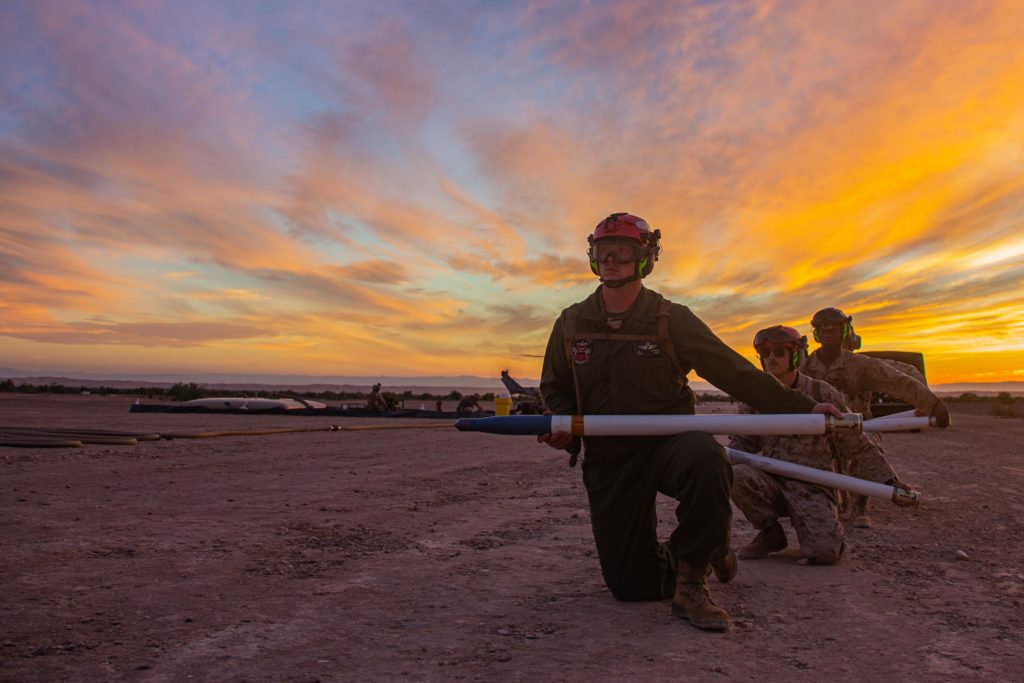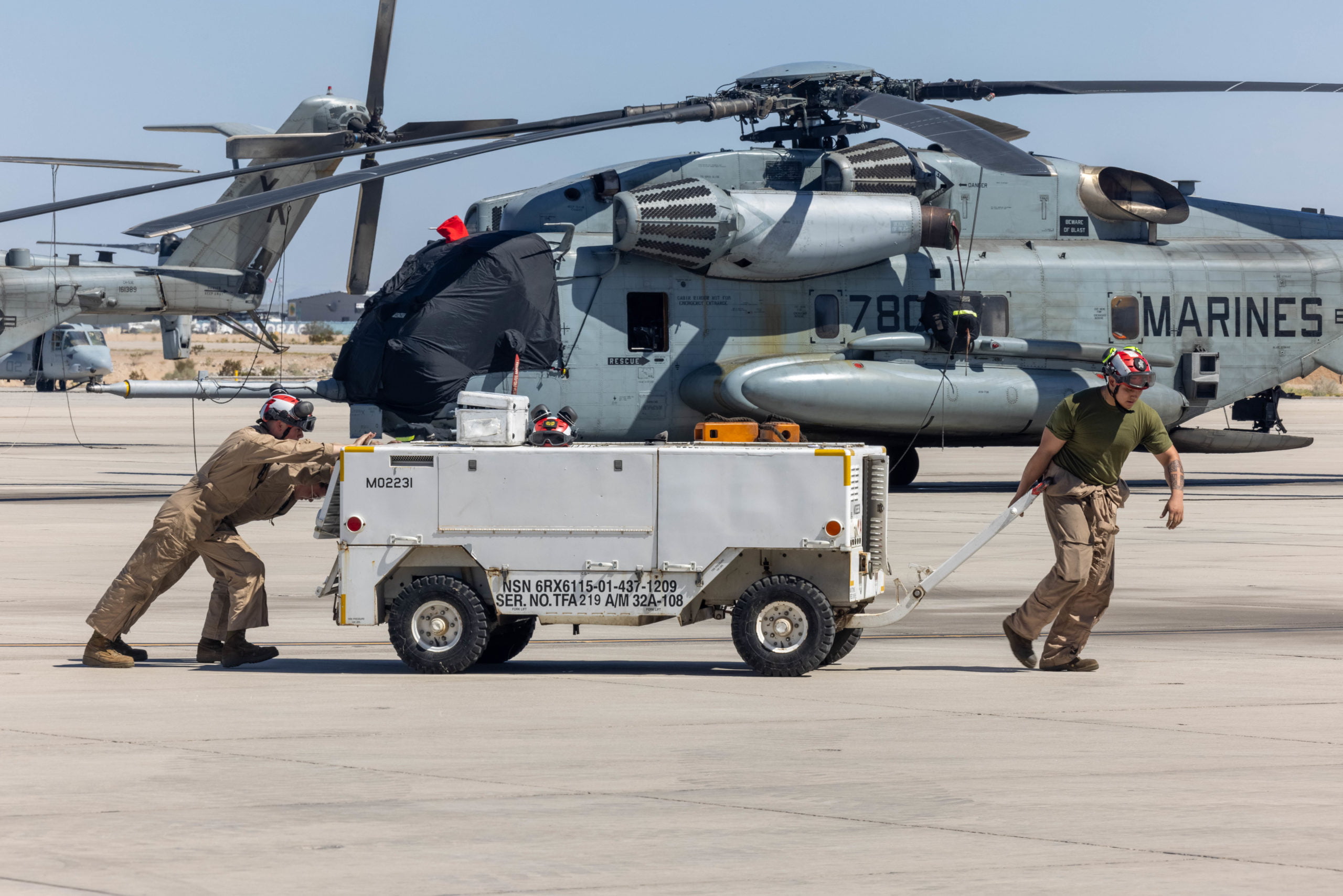By Robbin Laird
Each of the services is seeking ways to distribute their force for survivability and presence, but at the same time working through a joint lens to enhance lethality.
But the elephant in the room is sustainability, maintainability, and broader considerations of logistics support.
When visiting PACFLEET and PACAF this past April, one of the key subjects we discussed was the problem of how to have a sustainable distributed force.
How to do you support a distributed maritime force?
How do you support an Air Force doing agile combat employment?
It is no shock that when the Marines are focusing then on EABO and other approaches to force distribution that they face similar problems.
How do you maintain a force which is distributed?
One can demonstrate a FARP in which the F-35 receives fuel, but what if it needs the right kind of maintainer and the parts that are needed when it wishes to leave the FARP?
How do you move ammunition and weapons to keep a sustained moving EABO force?
Since this is not done by pixie dust, what support systems are available?
How are the personnel trained and available to do such operations?
Since the trend is away from iron mountains of weapons and material how do you create a chessboard of support for the force at the tactical edge?
To do so will require significant organizational change in DoD and the shaping of a truly joint sustainment system.
But the services are moving out on ways to distribute force in advance of any such changes.
This is obvious in a place like MAWTS-1 where the focus is upon the standardization of training for operations.
How to standardize maintenance and sustainment for the EABO focused Marines?
To be blunt this is a struggle and an effort in progress, but in my own view, the resolution of this challenge is at the joint sustainment level not simply at the USMC or U.S. Navy level.
And joint solutions can be crafted using the air systems and autonomous systems coming in the near to mid-term including USVs and UAVs.
I discussed the current situation with regard to standardization of maintenance and weapons support with three MAWTS-1 Marines. Major James J. Lay is the head of aircraft maintenance at MAWTS-1. Captain Jonathan R. Caruthers is in charge of aviation ordinance support to the aircraft operating at WTI. And Captain Tyler Thomsen who is the director of the advanced aircraft maintenance course at MAWTS-1.
I had a number of take-aways from my discussion with these three very capable officers. I am not holding them responsible for how I interpreted our discussion but am crediting them with insights with regard to the whole transition challenge.
The first is simply how daunting their task really is. MAWTS-1 is not an owner of aircraft. It is a facilitator of integrated operations which means that aircraft come from the various USMC air wings, fly into Yuma and within one week, they have to make the aircraft ACE ready.
They then have to organize the maintainers as part of a command-wide training effort to shape standardization across of the force. Maintainers come from the MAWs and it is in MAWTS that best practices are brought together allowing the standardization of those practices throughout the USMC. This obviously is ongoing learning process which is driven by maintenance experience of the air wings in operations which then gets standardized at MAWTS-1.

Second, the template for provision of weapons has been the iron mountain at a base or support facility then moved out to the areas of interest.
But this template needs to be adjusted in several ways.
There needs to be a ramp up of weapons supply.
There need to be new methods and procedures to distribute weapons across a distributed force.
The work which MAWTS-1 has been doing with regard to FARPS/EABOs provide a demonstration of how challenging movement of weapons over a distributed force operational area is and the question of how to work this remains to be resolved.
The problem in part rests in acquisition. The Marines acquire ground-based ammunition: The Navy acquires weapons for the air element.
How to ensure a common adequate flow of weapons to a USMC expected to support the Navy in new ways?
Third, there is the need clearly to provide a different generation of weapons for the use of a distributed force designed to deliver integrated fires at range and distance required.
But what will be the new template to distribute such forces to an agile combat force?
In short, MAWT-1 is an incubator for testing the real world for new approaches and certainly along with the Navy and the Air Force’s weapon schools will attack this challenge in real world terms.
Credit Featured Image: U.S. Marines with Marine Heavy Helicopter Squadron 361 (HMH-361), Marine Aircraft Group 16, 3rd Marine Aircraft Wing, perform maintenance on U.S. Marine Corps CH-53E helicopters assigned to Marine Aviation Weapons and Tactics Instructor (WTI) course 1-24 at Marine Corps Air Station Yuma, Arizona, Sept. 20, 2023. The WTI course is an advanced, graduate-level, seven-week course hosted at MAWTS-1, which provides standardized advanced tactical training and certification of unit instructor qualifications, to support Marine aviation training and readiness, and to assist in developing and employing aviation weapons and tactics. U.S. Marine Corps photo by Lance Cpl. Ruben Padilla.


